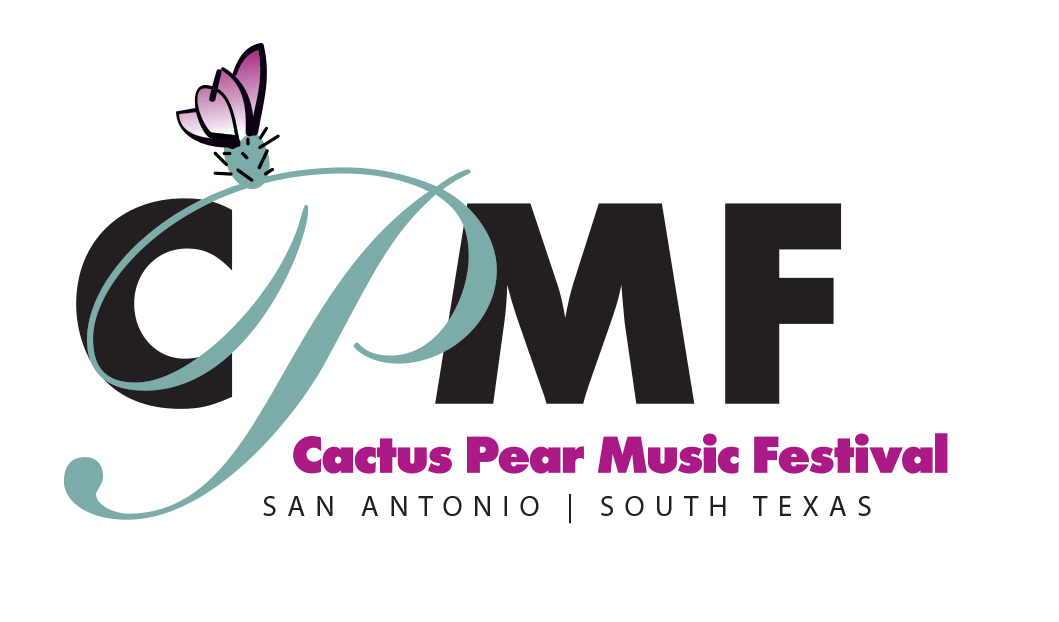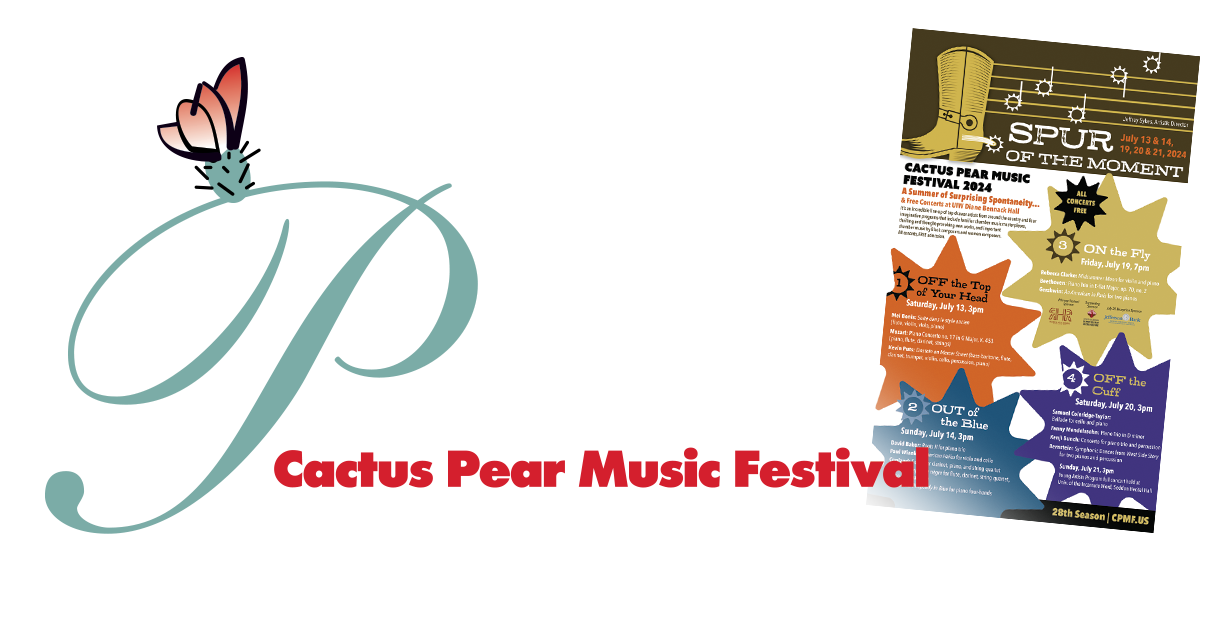Season 27
Program 1 Notes
1.
The More Things Change…
Thursday July 6, 2023
Chapel in the Hills, Wimberley – 7 pm (Free, limited seats, reserve seat(s) at ticket site)
CONCERT SPONSORED BY DAVID & ELLEN BERMAN
Friday July 7, 2023
Trinity Baptist Church, San Antonio – 7 pm
Manuel de Falla
(1876-1946)
•
Siete canciones populares españolas
for soprano and piano (1914)
El paño moruno • Seguidilla murciana • Asturiana • Jota • Nana • Canción • Polo
— Birsan, Sykes
Ludwig van Beethoven
(1770-1827) •
Selections from Scottish and Irish Folk Songs for soprano, bass-baritone, flute, violin, cello, and piano (1810-18)
In vain to this desert my fate I deplore • The sweetest lad was Jamie • They bid me slight my Dermot dear •
Sally in our alley • Farewell bliss and farewell Nancy
— Birsan, Jones, Jutt, Zori, Olsen, Cuellar
Undine Smith Moore (1904-1989) • Afro-American Suite for flute, cello, and piano
• Nobody knows the trouble I see, Lord/Brothers, will you pray for me and
help to drive ole Satan away
• I heard the preaching of the Elder, preaching the word of God
• Who is that yonder? Oh, it looks like my Lord, coming in a cloud
• Shout all over God’s heaven
— Jutt, Olsen, Sykes
Shawn Okpebholo
(b. 1981) •
Balm in Gilead
for baritone, flute,
and piano (2013)
— Jones, Jutt, Sykes
Antonín Dvořák (1841-1904) • Piano Trio in E minor, op. 90, (“Dumky”) (1891)
Lento maestoso: Allegro quasi doppio movimento • Poco adagio: Vivace non troppo: Vivace • Andante: Vivace non troppo: Allegretto • Andante moderato: Allegretto scherzando: Quasi tempo di marcia • Allegro • Lento maestoso
— Zori, Olsen, Cuellar
For a printable PDF of ALL program notes & song text/translations,
click here.
The more things change, the more they stay the same. This is as true in music as it is in life. Folk music has been a source of inspiration for composers since the dawn of time. Today’s program features music inspired by a tremendous variety of folk traditions—from the Spanish jota to the Irish reel, from the Black spiritual to the Czech—or is it Ukrainian?— dumka.
— all program notes by Jeffrey Sykes, DMA
Manuel de Falla (1876-1946)
Siete canciones populares españolas (1914-15)
for soprano and piano
Manuel de Falla's "Siete canciones populares españolas" (Seven Popular Spanish Songs) is a song cycle that showcases the composer's deep connection to the folk music of his native Spain. Composed between 1914 and 1915, the collection brings together a vibrant array of traditional melodies from different regions of his homeland. Each song is a gem in its own right, offering a glimpse into the diverse rhythms, flavors, and emotions of Spanish folk music.
The influence of Falla's training as a pianist is evident in the piano accompaniment. From the playful "El paño moruno" (The Moorish Cloth) to the melancholic "Asturiana," Falla's arrangements demonstrate his ability to capture the essence of each song through nuanced piano writing. The songs vary in character, ranging from tender and introspective to exuberant and rhythmic, creating a tapestry of Spanish musical traditions.
The cycle exemplifies Falla’s commitment to preserving and revitalizing Spanish folk music. By transcribing and arranging these traditional songs, he elevated their status from simple melodies passed down through generations to fully realized art songs. The cycle has since become a staple of the vocal repertoire, admired for its evocative melodies, evocative harmonies, and the distinctive Spanish flavors infused throughout.
Ludwig van Beethoven (1770-1827)
from Scottish Songs, Op. 108 and Irish Songs, WoO 152, for soprano, baritone, flute, violin, cello & piano (1809-20)
In late eighteenth-century Scotland and Ireland, there was a movement afoot to collect and catalogue native folksongs. A number of such collections were published in the last quarter of the 1700s. The Scotsman George Thompson, who came to this game in the 1790s, wanted to create a collection that surpassed all others. He had the idea to approach the major Continental composers of the day—in his view, Haydn, Kozeluch, and Pleyel—and ask them to make folksong arrangements accompanied by violin (or flute), cello, and piano for his collection. Each of these composers obliged Thompson’s request. (Haydn created over 400 folksong arrangements for Thompson—and Thompson’s rivals.) Eventually all three composers stopped writing for Thompson, at which time he approached Beethoven.
Over a period of eleven years (1809-1820), Beethoven composed 179 folksong arrangements for Thompson. It is, quite astonishingly, the largest body of work from Beethoven’s pen. Beethoven’s biographer Thayer tells us that
A very remarkable feature of the enterprise was, that the composers of the accompaniments had no knowledge of the texts, and the writers of the poetry no knowledge of the accompaniments. The poets, in many cases, had a stanza of the original song as a model for the meter and rhythm; in all others, they and the composers alike received the bare melody, with nothing to guide them in their work but Italian musical terms: allegro, moderato, andante, affettuoso, espressivo, scherzando, and the like.
Beethoven repeatedly demanded the texts from Thompson, claiming that he could not compose arrangements without them, but it is clear that he had no knowledge of the text for the vast majority of the arrangements he created. In many cases this was because the texts had not yet been written! Thompson commissioned contemporary Scottish poets, notably Robert Burns, to provide new verses to the original folksongs.
Sending packages of music back and forth between Edinburgh and Vienna was no simple task at the height of the Napoleonic Wars. Beethoven sent three copies of his first batch of 53 songs to Edinburgh in July 1810. Only one ever reached Thompson—in July 1812—and that package had been routed through Malta! Happily, all of Beethoven’s settings eventually reached their destination and were published by Thompson. The arrangements are wonderful chips off the old block, showing Beethoven at his best. Tonight we will hear three duets and two solos from the Scottish Songs, op. 108, and the Irish Songs, WoO 152.
Undine Smith Moore (1904-1989)
Afro-American Suite for flute, cello, and piano (1969)
Undine Smith Moore's "Afro-American Suite" for flute, cello, and piano beautifully weaves together elements of African-American musical traditions with classical chamber music. Composed in 1969, the suite is a testament to Moore's deep appreciation for her cultural heritage and her innovative approach to composition. She writes in the preface to the score,
The musical sources for the Afro-American Suite are authentic Negro spirituals originating in the slave period of American Black history. Called “Sorrow Songs” by Frederick Douglas, they are primary examples of the Black experience told from the perspective of those who lived it, and drew on their artistic gifts to express and record their lives…. Art preserves life in a very special way. Our memories die with us, but art preserves our values and experiences.
The first movement, based on “Nobody knows the trouble I see, Lord” and “Brothers, will you pray for me and help me to drive ole Satan away,” sets a contemplative and introspective mood. In contrast, the second movement, based on “I heard the preaching of the Elder, preaching the word of God,” bursts with lively energy and syncopated rhythms. The third movement, based on “Who is that yonder? Oh, it looks like my Lord, coming in a cloud,” is a hauntingly beautiful lament, with the cello taking center stage. The suite concludes with the vibrant and spirited "Shout all over God’s heaven," bringing the work to a triumphant close.
Shawn Okpebholo (b. 1981)
Balm in Gilead (2013)
Shawn Okpebholo is a versatile composer known for his emotionally engaging musical compositions. Drawing from a wide range of influences, including classical, jazz, gospel, and African-American spiritual traditions, Okpebholo weaves together diverse musical elements to create unique and dynamic works. His compositions are characterized by their rich harmonies, expressive melodies, and an ability to connect with audiences on a deep and visceral level.
With a deep appreciation for the power of storytelling through music, Okpebholo's compositions often explore themes of identity, spirituality, and the human experience. “Balm in Gilead,” arranged in 2013 for baritone, flute, and piano, is the beautiful opening number from his first collection of “reimagined” traditional spirituals.
Antonín Dvořák (1841-1904)
Piano Trio in E minor, op. 90, “Dumky” (1891)
In 1877, Antonín Dvořák (1841-1904) received a letter from Eduard Hanslick, chair of the Austrian Commission for the Conferring of Artists’ Scholarships, notifying him that for the third year in a row he had been awarded a prize of 600 florins:
Johannes Brahms, who together with me has proposed this grant, takes a great interest in your fine talent, and likes especially your Czech vocal duets…. The sympathy of an artist as important and famous as Brahms should not only be pleasant but also useful to you, and I think you should write to him…and perhaps send him some of your music…. After all, it would be advantageous for your things to become known beyond your narrow Czech fatherland….
Dvořák had been composing for some time, but with only middling, local success. Brahms was amazed at the freshness and vitality of Dvořák’s music and began pulling strings for him. Just as Schumann had done for him, Brahms wrote his own publisher, Fritz Simrock, and encouraged him to publish Dvořák’s Moravian Duets. The music sold like hotcakes and, thus, was Dvořák’s career propelled to a new level.
In November 1890, at the height of his career, Dvořák wrote to one of his friends, “I am working on something very small…. These are little pieces for violin, cello, and piano. The work will be happy and sad! In some places like a meditative song, in others like a joyful dance.” The work he was referring to is the Piano Trio in E minor, op. 90, known as the "Dumky" Trio, one of the composer's most renowned works. The piece is structured as a series of six "Dumka" movements, each featuring an alternation of slow, introspective music with faster and more ebullient music.
Though we associate the word “dumka” with Czech music, and particularly the music of Dvořák, the term is originally Ukrainian; the word literally translates as “thought.” The term came to be applied to a traditional form of Ukrainian folk music—epic ballads characterized by thoughtful, melancholic and often nostalgic themes. This form was appropriated and adapted by Czech and other Slavic composers over the course of several hundred years, most notably Dvořák; and the Czech understanding of the form implied sudden changes in character from lamentation to exuberance.
The first movement of the "Dumky" Trio sets the tone for the rest of the piece, with a mournful introduction leading into a lively and upbeat melody. The many moments of recitative, dialogue, and questioning gestures make the narrative quality of the music very clear. The second movement is perhaps the most well-known of the six, featuring a cello cadenza and a series of intricate interplays between the three instruments.
The third and fourth movements continue in a similar vein, with the slow, mournful introductions giving way to lively and rhythmic melodies. The fifth movement reverses this, beginning with faster music and becoming slow later on. The final movement of the "Dumky" Trio ends with an uplifting theme in the cello that is suspiciously similar to a theme a famous film composer used for one of his most famous films a century later.
The "Dumky" Trio has been a staple of the chamber music repertoire since its premiere in 1891, and its popularity shows no signs of waning. The piece continues to be celebrated for its innovative use of folk music elements, its masterful handling of the Dumka form, and its evocative and deeply emotional themes.





